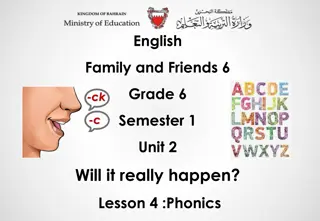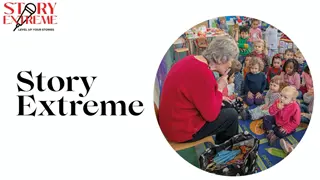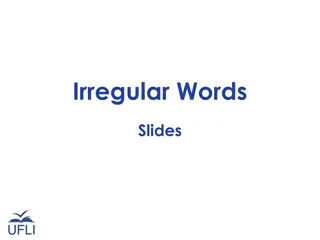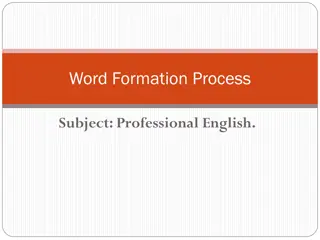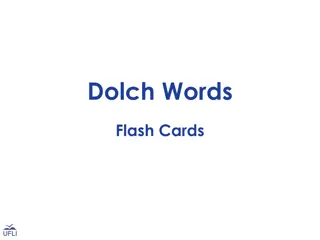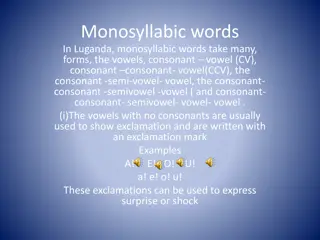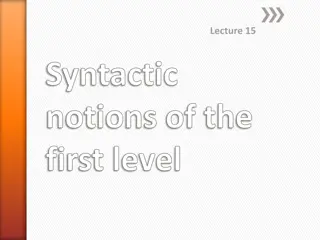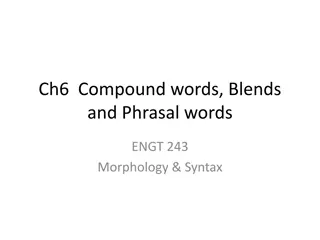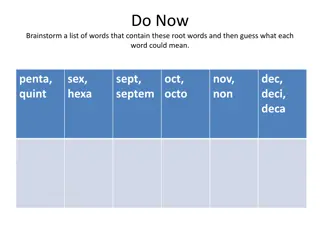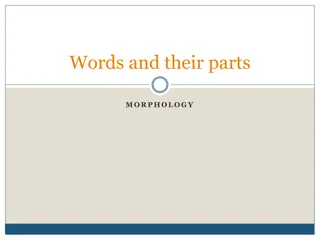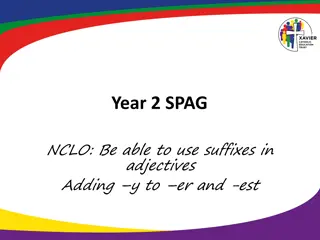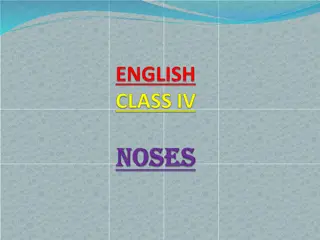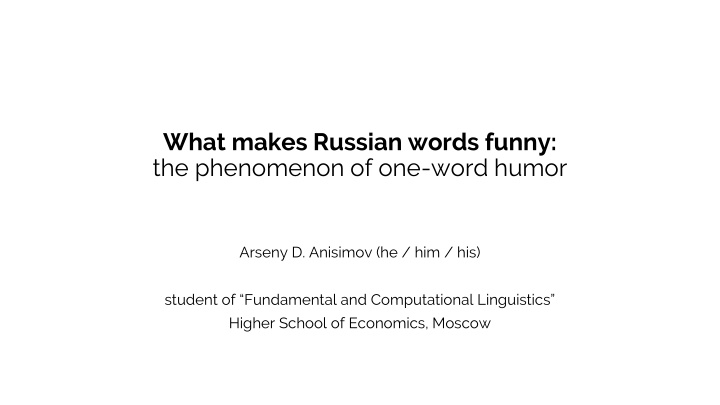
Russian Words Funny: The Phenomenon of One-Word Humor
Explore the humorous aspects of Russian words through the study conducted by Arseny D. Anisimov, focusing on factors predicting humor judgement and experiments analyzing the funniness of single words. Discover how semantic and form-related factors contribute to the humor perception of Russian speakers.
Download Presentation

Please find below an Image/Link to download the presentation.
The content on the website is provided AS IS for your information and personal use only. It may not be sold, licensed, or shared on other websites without obtaining consent from the author. If you encounter any issues during the download, it is possible that the publisher has removed the file from their server.
You are allowed to download the files provided on this website for personal or commercial use, subject to the condition that they are used lawfully. All files are the property of their respective owners.
The content on the website is provided AS IS for your information and personal use only. It may not be sold, licensed, or shared on other websites without obtaining consent from the author.
E N D
Presentation Transcript
What makes Russian words funny: the phenomenon of one-word humor Arseny D. Anisimov (he / him / his) student of Fundamental and Computational Linguistics Higher School of Economics, Moscow
1. Previous studies based on English analyzed single non-words and single words [Westbury et al. 2016; Westbury & Hollis 2019]. Factors predicting humor judgement in English: containing rude-alluding substrings lower average entropy per letter (consisting of more rare letters) lower word frequency pertaining to 1 or more of the semantic groups insult , sex , party , animal , non-sexual bodily functions non-words words The types of factors semantics-related factors (taboo and/or positive emotions) factors related only to the form discourse-related (word frequency)
2. So, our aim was to use experimental and statistical methods to find the factors of the meaning and form which make Russian words funny for Russian speakers. Our samples ~900 answers to Write 3 words which you consider funny 596 filtered words or short phrases (see 4) 40 the most frequent answers from 596 (see 3.1 and 3.2)
3. Experiments 3.1. Semantic differential. Are these 40 words actually funny? Stimuli: 40 single words without variation in stress. Fillers: 40 words from the same semantic categories. Participants: 128 people, age from 12 to 62 (M=18.7, SD=8.64) Methodic: 10 blocks on a page, 2 pages in the Google Forms. 1 block is a word-string or an audio recording and a table with 3 scales from 1 to 5. Participants answered to the questions How funny is this word? , How understandable is this word? , How often do you use this word? . There were 3 variants: with the word-strings, audio recording of male, and female voice.
Clarity, subjective frequency and estimated funniness of stimuli and fillers.
the the least funny the the least funny 3.2. Best-Worst. Which of 40 are the funniest? word funniest word funniest 16 60 51 67 61 61 63 91 86 75 94 86 86 74 102 86 113 97 106 117 298 291 247 286 239 213 157 188 172 147 183 155 153 131 167 132 160 131 127 117 131 137 132 184 130 175 113 151 158 183 199 207 211 216 226 213 213 258 254 246 117 110 103 142 98 121 76 89 76 74 77 75 73 73 61 54 52 59 56 49 Stimuli: 40 single words. Participants: 508 people, age from 12 to 62 (M=22, SD=10.7). Methodic: 1 block on a page, 10 pages in the Google Forms. 1 block is 4 lists of 4 words with check-boxes. Participants had to choose one word in each category: the funniest, the least funny, the most understandable, the least understandable. 40 variants were made in order to make every word appear in different contexts.
distance 5 7 2 2 1 3 8 4 20 9 7 7 6 6 0 0 9 11 7 9 1 best-worst sem. dif. the least funny 1 2 3 4 5 6 7 8 9 3.2. Best-Worst vs Semantic differential Average distance in the pair is 6.2. If we suppose that the ratings in two experiments are not correlated, the expected average distance is 20. We are not sure what statistic metric should be applied to verify significance. 10 30 31 32 33 34 35 36 37 38 39 40 the funniest average dist. 6.2
4. Statistical differences between 596 funny words and the sample of the regular words 596 words or short phrases were compared with 25,000 lexemes from the Frequency dictionary of the modern Russian language [Lyashevskaya & Sharov 2009]. 4.1. Semantic groups 248 of 596 word (41%) belong to at least one of the groups: ridiculuous or dismissive ( ) food and related ( , ) animals and related ( , ) sex ( , ) words with rude-alluding substrings ( , , ) body parts and nonsexual bodily functions ( ) cute ( , ) entertainment ( , - ) distorted or obsolete ( , ) related to laughing ( , ) 4.2. Diminutive suffixes 136 of 596 word (22.8%) have diminutive suffix or pseudosuffix (- , - -/- -, - -, - -, - -, - -, - -). In the Frequency dictionary less than 10% of words contained a diminutive suffix. It was called a pseudosuffix if the word did not exist without this element ( ).
4.3. Lower letter entropy The expectancy violation theory [Westbury et al 2015: 142-144] explains why words that sound "weird" can make a humorous effect. A native speaker has an idea of the statistical distribution of letters and sounds of his native language. Violation of this representation for example, a large proportion of rare letters in a word affects the evaluation of the word as more strange, peculiar. We found out that 596 funny words had lower average entropy per letter. 4.4. CVCV patterns Repetitions of letters of the pattern CVCV and less often VCVC. Repetitions occur in 35 out of 593 words (5.9%), in ordinary words only in 448 out of 52139 (0.86%). general words funny words According to the chi-square criterion, this result is statistically significant. In 28 of the 35 funny words, the repetition is at the beginning. Average letter frequency. t-test: statistic = 16.1307, p-value < 0.0001
5. Discussion The main conclusion based on the results of the work is that predicting the humorous effect of even single words requires taking into account a large number of variables. The most effective predictors clarity and subjective frequency are formulated vaguely and are difficult to assess without interviewing a representative sample of speakers. Formal and clearer criteria entropy, the presence of certain letters and the repetition of syllables also require experimental confirmation.
6. References Lyashevskaya & Sharov 2009 Frequency dictionary of the modern Russian language (based on the materials of the National Corpus of the Russian language). Moscow: Azbukovnik, 2009. Westbury et al. 2016 Chris Westbury, Cyrus Shaoul, Gail Moroschan, Michael Ramscar. Telling the world s least funny jokes: On the quantification of humor as entropy. Journal of Memory and Language. Volume 86, P. 141 156, 2016. https://doi.org/10.1016/j.jml.2015.09.001. Westbury & Hollis 2018 Chris Westbury, Geoff Hollis. Wriggly, Squiffy, Lummox, and Boobs: What Makes Some Words Funny? Journal of Experimental Psychology: General, 2018. Advance online publication. http://dx.doi.org/10.1037/xge0000467

